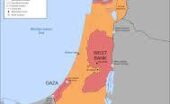Molly Minturn - My family is heartbroken to share that my father died in surgery on Monday, Feb. 10. It…
David Rubinger, R.I.P.
Written by Diana Thebaud Nicholson // March 2, 2017 // Absent Friends // Comments Off on David Rubinger, R.I.P.
David Rubinger, legendary Israeli photographer behind iconic Western Wall photo, dies
Israel Prize winner David Rubinger, whose lens captured key moments in Israeli history and helped define the nation’s collective consciousness, dies at 92.
(Haaretz) David Rubinger, the legendary Israeli photographer behind an iconic photo of Israeli paratroopers entering the Western Wall for the first time, died Thursday at the age of 92.
Awarded the Israel Prize for his works in 1997, Rubinger’s photographs captured key moments in Israel’s history and helped define its collective consciousness.
Born in Austria in 1924, Rubinger immigrated to Israel in 1939 and fought with the “Jewish Brigade” during World War II. He began to work as a photojournalist in 1951, first with the now defunct daily Haolam Haze (This World) and then with Yedioth Ahronoth. He also served as Time Life’s photographer in Israel.
Over his illustrious career, Rubinger took over 500,000 pictures that tell the story of the state of Israel, exemplified in his iconic photograph of three Israeli paratroopers looking up at the Western Wall. The photo, taken after the first Israeli soldiers entered East Jerusalem during the 1967 Six Day War, is viewed as a symbol of Israel’s victory in the decisive war, that saw it take full control of Jerusalem, include the Old City and the Jewish holy site.
 Bad photo
Bad photo
In an interview about the iconic image, Rubinger said that a day before Israeli troops entered Jerusalem’s Old City on June 7, 1967, he was in the Sinai, snapping shots of Israeli soldiers: “That night I heard some talk on the command radios about something happening in Jerusalem. I didn’t hesitate and just snuck into a helicopter that was evacuating wounded soldiers.”
According to Rubinger, “when I got to Jerusalem, I heard gunshots, so I ran to the Western Wall, maybe 20 minutes after it was taken. I laid down on the ground and these three soldiers just passed by. I didn’t think much of the photo at the time.”
Later, the IDF’s chief rabbi, Shlomo Goren, arrived at the scene, “I thought that would be ‘the shot’. When I developed the photos at home, I told my wife: ‘Rabbi Goren, that’s a great photo, historical.’ But my wife pointed at the image of the soldiers and said: ‘that’s a nice photograph.’ And I told her: ‘What nonsense.'”
Rubinger said that though it was his most famous, he did still does not think it was a very good photograph: “Part of the face is cut off one the right said, in the middle the nose protrudes, and on the left there’s only half a face… photographically speaking, this isn’t a good photo.”
President Rivlin eulogized Rubinger, saying “there those who write the pages of history and there are those who create them with their lens. David immortalized history in his photographs that will forever remain in our memory. I will continue to carry him in my memory, armed with his old and faithful camera.”
We had the great privilege of knowing David and calling him our friend. We not only own his wonderful books but he also gave us a copy of the Western Wall photo which we proudly display.
The Haaretz piece shows several of his most famous photos, but not some of our favorites for which David offered some wry alternative captions.
RIP, David, you had an amazing life!
In Memoriam: David Rubinger, Israel’s Iconic Photographer, Has Died
(TIME) David Rubinger, who died on March 1 at age 92, was the most famous photographer in Israel, the nation whose creation, conflicts and leaders he made his life’s work. Rubinger’s black-and-white images for TIME and sometimes for LIFE were the iconic images of the Jewish state. And his personal elegance over nine decades of life carried an essential quality of the country’s founding generation into a more prosaic present.
Think of a photograph from Israel, and chances are it was taken by David Rubinger. The Israeli paratroopers gaping in awe at the just-captured Western Wall — that was his. A jubilant crowd carrying a leader of the Entebbe raid on its shoulders? He got that. Prime Minister Menachem Begin, bent over to help his wife into her shoe on the official plane, Rubinger captured that, too. He seemed to be present at both every major milestones, and every telling moment, though in many cases that was because he lifted his Leica and made it so. Israel’s president, Reuven Rivlin, recognized just that in his official statement lamenting Rubinger’s passing: “Through his photography, David eternalized history as it will be forever etched in our memories.”
Rubinger had the first thing every photojournalist needs — access — not only because he was impeccably pleasant company, but because he was there from the beginning. Born in Vienna in 1924, Rubinger moved to what was still British Mandate Palestine in 1939. His mother was among the relatives murdered in the Holocaust. He served in the British army’s “Jewish Brigade” during World War II and later fought Arab armies for the contested land on which Israel would be built. He turned to photography at a time when the newborn country was pretty much a bunch of people trying to figure things out, and moved easily in the orbit of every prime minister since David Ben-Gurion, the founder. ” When Israel’s leaders saw David, the older ones recalled all their shared history and greeted him warmly; the younger ones felt privileged, because here was a living connection between them and their early-Zionist heroes, whose faces they knew largely from David’s pictures,” Matt Rees, a former TIME bureau chief in Jerusalem, wrote in a tribute for the Foreign Press Association, which Rubinger helped found.
All the while, with his wife of 54 years, Anni, the photojournalist maintained close control over the growing catalogue of his images, assuring both an income and credit for his life’s work compiled in the 2008 book, Israel Through My Lens.
Their home on a leafy cul-de-sac in Jerusalem was a throwback to a more cosmopolitan time in the city, which has always simmered with the conflict with the Palestinians who share it, and in recent decades has taken on the severity of Judaism’s most pious sects. The interior of the low stone house felt like a movie set, decorated with the lushness and taste of a life richly lived. Friends knew it was also the scene of a violent death — the new love Rubinger had found after Anni’s death had been murdered by a gardener there in 2000. Some made much of the fact that the gardener was Palestinian. Rubinger knew the man was angry over money, not politics. “As if we don’t have Jewish murderers,” he said. I last saw him on at a sidewalk cafe in Tel Aviv, eating lunch with a striking woman perhaps two-thirds his age, which at the time would have been 89.
The New York Times adds some personal details not found elsewhere
“His first camera, an Argus, was a parting gift from a French girlfriend he met while serving with the British Army in Europe in 1945. She gave it to him as he boarded a train on his way back to his adopted home in Palestine. That, he said later, was when his lifelong love affair with photography began. … He bought his next camera, a Leica, in 1946, in postwar Germany — paying for it, he said, with 200 cigarettes and a kilo of coffee. That same year, in Germany, he married his first cousin, Anni Reisler. It was supposed to be a fictitious marriage of convenience, to get Ms. Reisler out of Germany and into Palestine. It soon turned into a real marriage, if a tempestuous one. The couple moved to Jerusalem and had two children, Tamar and Amnon. Anni Rubinger died in 2000.
… He was also known for his intimate portraits of Israel’s leaders, some in tender moments with their spouses or in their homes. He later revealed one trick of the trade: He always made sure to take a few extra photos of the leaders with their security guards in the frame, then sent the guards copies, ensuring good access the next time.
Veteran Israeli photographer David Rubinger dies aged 92
Former Time-Life photojournalist was renowned for photo of Israeli paratroopers at Western Wall during six-day war
(The Guardian) His death was announced on Thursday by his children.
 “Frequently these days, when looking back over the years, I find myself asking how I could have been so lucky,” Rubinger wrote in his 2007 biography, Israel Through My Lens: Sixty Years as a Photojournalist.
“Frequently these days, when looking back over the years, I find myself asking how I could have been so lucky,” Rubinger wrote in his 2007 biography, Israel Through My Lens: Sixty Years as a Photojournalist.
“I went through 10 wars unscathed and survived countless other high-risk situations, and I have reached the peak of the photographic profession, with worldwide recognition for my work, being the oldest person on the masthead of Time, one of the world’s most prestigious magazines,” he said.
He was awarded Israel’s highest honour, the Israel Prize, in 1997.
“There are those who write the pages of history, and there are those who illustrate them through their camera’s lens. Through his photography, David eternalised history as it will be forever etched in our memories,” said the Israeli president, Reuven Rivlin.
“Interwoven Destinies: Marc Chagall and David Rubinger in Jerusalem”
In memory of Marc Chagall and as a special 30 years’ commemoration of his passing, Jerusalem Publishing Atelier is proud to publish, for the first time ever, a rare art collection based on the up-close and personal pictures of Marc Chagall, captured by Israel’s legendary photographer, David Rubinger, as he followed the Jewish master artist during his visits to Jerusalem during the 1960’s and 1970’s while working and completing his masterpiece for the Israeli Knesset.”
This momentous offering will allow a fortunate few to become a part of this history, celebrating both Marc Chagall whose artwork needs no introduction, and David Rubinger whose award-winning photograph of the three paratroopers immortalized at the Western Wall in Jerusalem as the 1967 war came to an end, is instantly recognizable.
It is a remarkable opportunity to be part of history: the history of art, the personal history of two masters in their respective fields, and the long history of the Holy City of Jerusalem.
This project was born through a mix of luck, curiosity and destiny. Jerusalem Publishing Atelier was in the final stages of the printing and publishing of their Dead Sea Scrolls Prints project and Ram Glick, one of JPA’s founding members, was searching for additional information about the scrolls.
Ram recalls: “Through a very lucky click of the mouse, I came across an old photo of one of my favorite Fine Art Masters, inspecting one of the Dead Sea Scrolls fragments. That Master, was the Great Marc Chagall.” “Being an extremely curious person, I looked for the source of this photo, hoping to uncover what I indeed eventually found: a file with photos of Marc Chagall during his visits to Israel and the Holy City of Jerusalem. The majority of these very rare and mostly never seen before photos were depicting Chagall’s visits in the 1960’s and 1970’s while working on his Masterpieces for the Israeli Knesset and the Hadassah University Medical Center. I immediately approached Yair Medina, the owner and CEO of the JPA studio and my partner in the Dead Sea Scrolls Prints project, and Yair informed me that, not only were these photos what I thought they were, they were also taken by one of Yair’s oldest friends and a studio client, Israel’s legendary photographer, David Rubinger.





